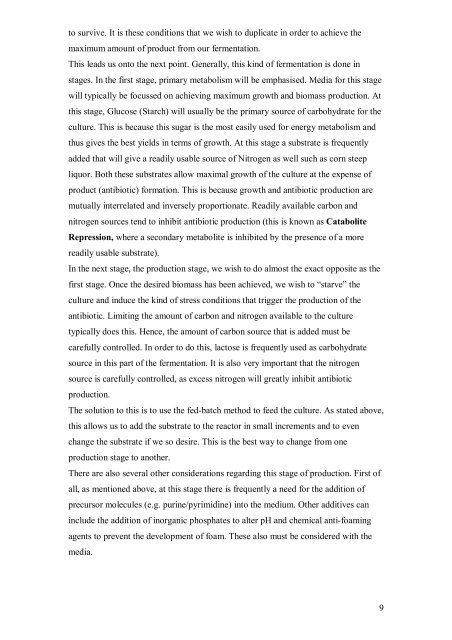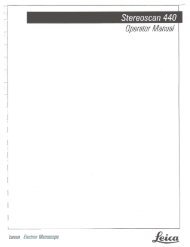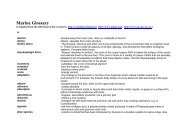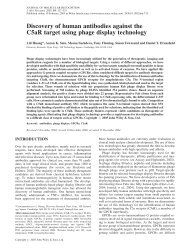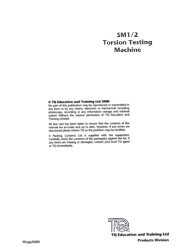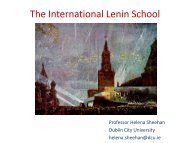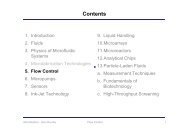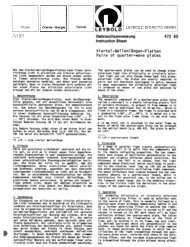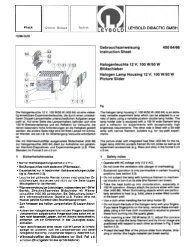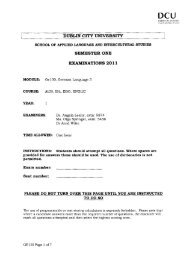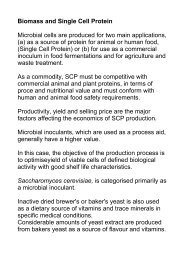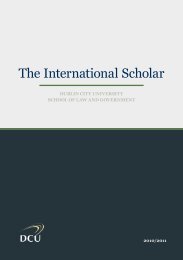Penicillin Production - DCU
Penicillin Production - DCU
Penicillin Production - DCU
You also want an ePaper? Increase the reach of your titles
YUMPU automatically turns print PDFs into web optimized ePapers that Google loves.
to survive. It is these conditions that we wish to duplicate in order to achieve the<br />
maximum amount of product from our fermentation.<br />
This leads us onto the next point. Generally, this kind of fermentation is done in<br />
stages. In the first stage, primary metabolism will be emphasised. Media for this stage<br />
will typically be focussed on achieving maximum growth and biomass production. At<br />
this stage, Glucose (Starch) will usually be the primary source of carbohydrate for the<br />
culture. This is because this sugar is the most easily used for energy metabolism and<br />
thus gives the best yields in terms of growth. At this stage a substrate is frequently<br />
added that will give a readily usable source of Nitrogen as well such as corn steep<br />
liquor. Both these substrates allow maximal growth of the culture at the expense of<br />
product (antibiotic) formation. This is because growth and antibiotic production are<br />
mutually interrelated and inversely proportionate. Readily available carbon and<br />
nitrogen sources tend to inhibit antibiotic production (this is known as Catabolite<br />
Repression, where a secondary metabolite is inhibited by the presence of a more<br />
readily usable substrate).<br />
In the next stage, the production stage, we wish to do almost the exact opposite as the<br />
first stage. Once the desired biomass has been achieved, we wish to “starve” the<br />
culture and induce the kind of stress conditions that trigger the production of the<br />
antibiotic. Limiting the amount of carbon and nitrogen available to the culture<br />
typically does this. Hence, the amount of carbon source that is added must be<br />
carefully controlled. In order to do this, lactose is frequently used as carbohydrate<br />
source in this part of the fermentation. It is also very important that the nitrogen<br />
source is carefully controlled, as excess nitrogen will greatly inhibit antibiotic<br />
production.<br />
The solution to this is to use the fed-batch method to feed the culture. As stated above,<br />
this allows us to add the substrate to the reactor in small increments and to even<br />
change the substrate if we so desire. This is the best way to change from one<br />
production stage to another.<br />
There are also several other considerations regarding this stage of production. First of<br />
all, as mentioned above, at this stage there is frequently a need for the addition of<br />
precursor molecules (e.g. purine/pyrimidine) into the medium. Other additives can<br />
include the addition of inorganic phosphates to alter pH and chemical anti-foaming<br />
agents to prevent the development of foam. These also must be considered with the<br />
media.<br />
9


